Rivercafe comes ashore
If you believe in signs, then we got a clear one from Mother Nature. A clear hint from the weather that it was time to end our season. As our friends made their way to their winter storage, we sailed the last 30 nm to Preveza, the nice little town at the entrance to the Ambracian Gulf on the Greek mainland.
You can always find an anchorage at Preveza, but this time it was packed. And no sooner had we dropped anchor than late autumn weather set in. It was almost like the North Sea. The temperature dropped by 10 degrees, it became stormy and it rained cats and dogs. Perfect for making our farewell easier. A frolicking seal and a lone dolphin only managed to lift our spirits briefly.
Preveza
Preveza is quite nice, but rather touristy in the waterfront areas. With a population of 20,000, it is one of the larger towns in the Ionian Sea. Many people make their living from charter tourism and yachties. It is packed during the season, but empty and lonely in winter. The town swells and ebbs with the arrival and departure of charter sailors, around whom everything revolves.
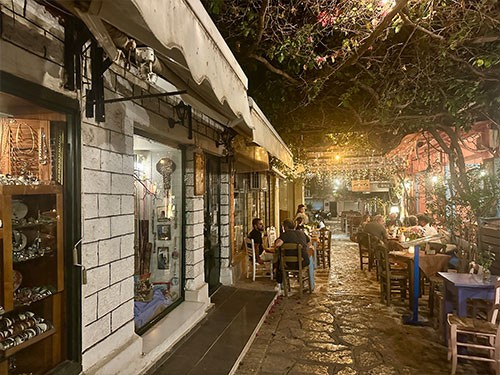
Alley in Preveza
It is located on the northern side of the canal, while on the southern side, right next to the airport, is the largest marine industry I have ever seen.
Three shipyards store vessels, mainly on land. With all the yacht services that ships need. Our shipyard alone had 1,200 boats on land when we arrived. In total, there are certainly about 3,000, and more are added every day. An incredible sea of masts that can be seen far out at sea and, of course, on Google Earth.
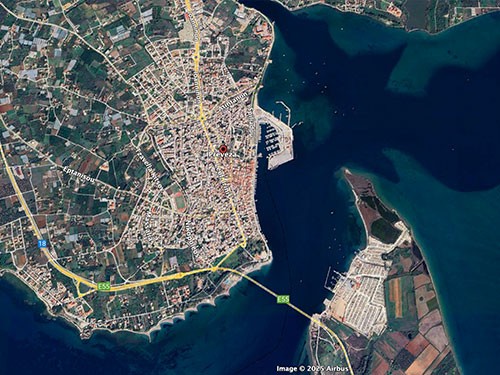
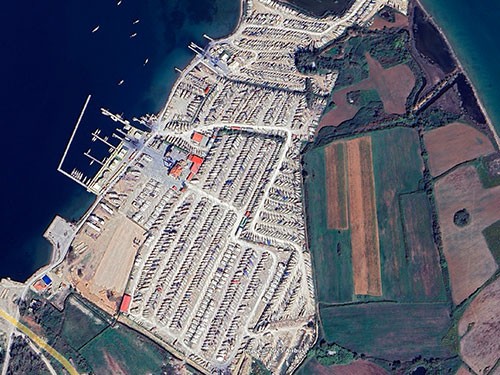
Preveza (left) and the enormous boat storage facility (right), connected by a tunnel under the canal (Google Earth)
Storage on the hard
For this winter break, we decided to put Rivercafe on land for a longer period of time, for the first time in her five-year life. After two years without a break in the water, the underwater hull needs to be repainted and the usual maintenance of the propellers, saildrives and valves is easier on land. We had already booked a berth and arranged a crane appointment at the beginning of the season. This is advisable for catamaran owners, as the number of shipyards with professional lifts and space is significantly lower than for monohulls. It is hard to believe the crane constructions some shipyards use to haul catamarans out of the water are not well suited for this kind of job with two hulls. Not so in Preveza.
It usually takes two days to winterise a boat. This time it took us a little longer because we took a lot of material off board. We started preparing at the anchorage and just managed to stow our headsail while the sun was still shining. On the second day, the weather turned nasty and the strong wind caused the first boats at the anchorage to slip. This included our neighbour. An older but very experienced and friendly German sailor moved in close to us on dinghy distance on the first night. After we had laid out an additional 20 m of over finally 60 m of chain (at a depth of 6 m), he came within arm’s reach of us again on the second night. Werner, as this nice man was called, was alert, however, and lifted his anchor in the middle of the night in rough weather to move his vessel out of the crash zone.
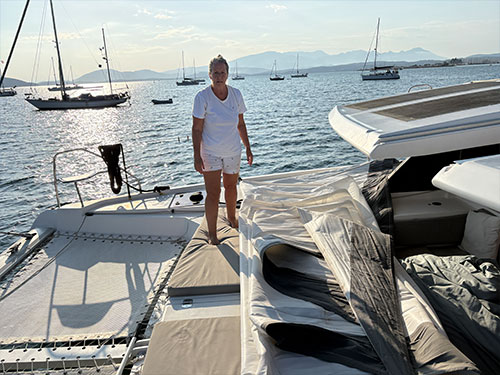
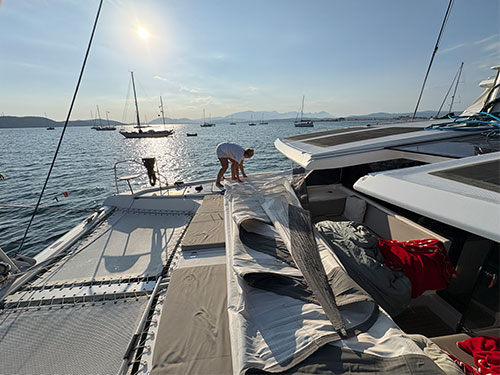
Folding the head sail with the surface area of an appartement
The bad weather was set to get even worse, so we went to the expensive Cleopatra Marina a day earlier than planned. The good but stressful news was that the marina wanted to crane us out a day earlier than planned because the weather in the following days would not allow for any more crane operations. This meant we had one day less to prepare and had to significantly increase our work rate. To compensate, we were reimbursed for one day’s mooring fees, which we used to treat ourselves to the best hotel in town plus dinner and still had money left over.
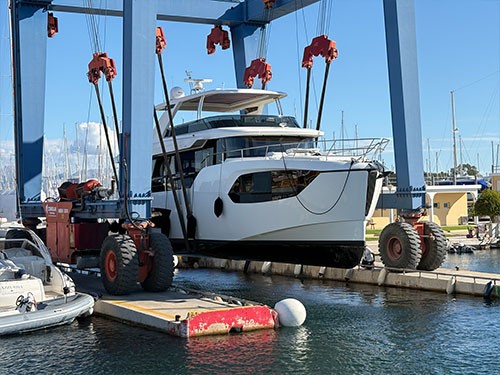
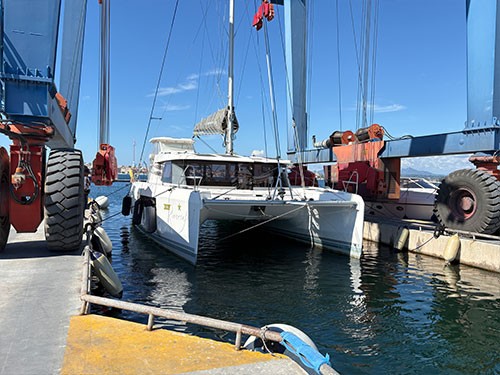
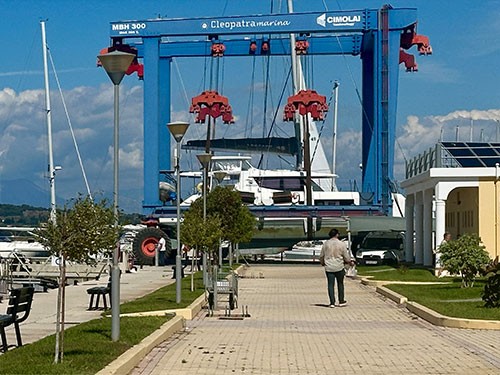
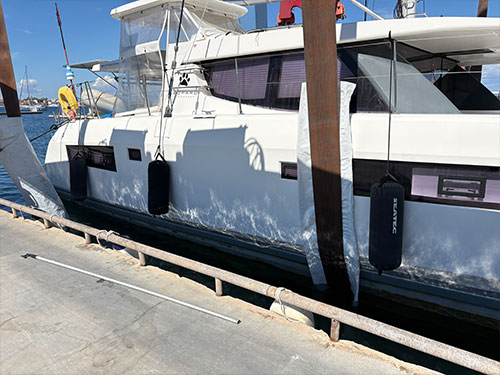
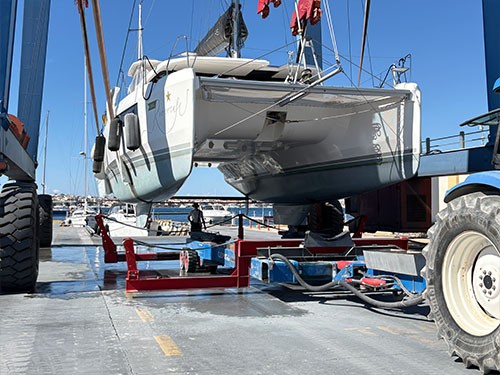
Motor yacht in front of us at the lift, Rivercafe haul-out
Masters of the haul-out
The crane operation at Cleopatra Marina is impressive. Now, at the end of the season, a boat is lifted out of the water every 15-20 minutes using one of two travel lifts. The guys and the equipment are the best I’ve ever seen for this kind of operation. All skippers are given a time at which they should arrive at the crane site and finally enter the haul out area. The crane crew attaches the slings to the correct points on the hulls underwater and slowly lifts the tonne load out of the water, then places it on a waiting flatbed truck. The rest is routine and experience until the boat is firmly and safely in place on land.
When we were called to the crane, we caught a sunny spell with almost no wind. A little gift to round off our trip. After our crane operator had lifted the Rivercafe ashore, the underbody was immediately steam-cleaned. After two years in the water and after a light wash, our underbody looked so clean that we could have been hoisted back into the water straight away. The differences between the many antifouling/bottom painting products are remarkable; choosing the right one saves a lot of time and money.
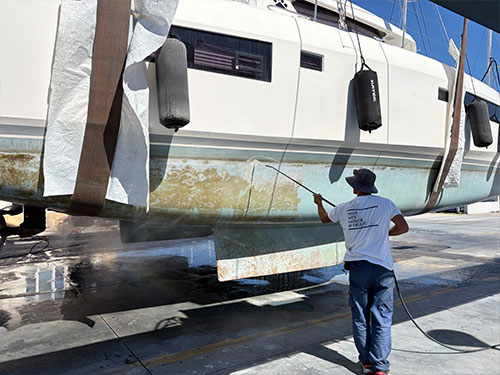
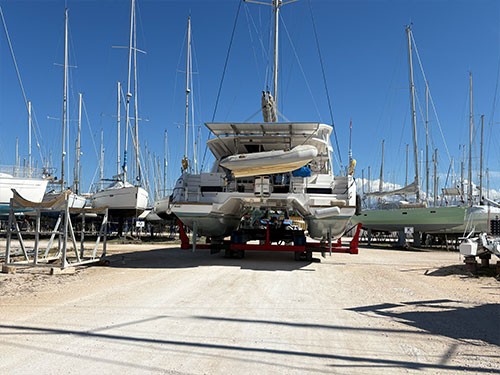
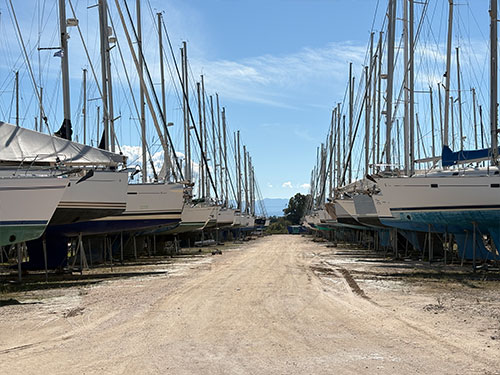
At the end of a very exhausting day (or several exhausting days), the Rivercafe was safely parked ashore and we waddled into the hotel and fell into bed, exhausted. On the first night without the boat, I woke up because I thought I heard a weather alarm from our digital barograph. I was already standing up before I realised that I haven´t been on the boat any more.
As we made our way to the airport in Preveza, the Cleopatra crew took care of the necessary maintenance on the Rivercafe: the engines, generator and air conditioning had to be flushed with fresh water to ensure that no salt water remained in the pipes. To do this, our trusty watermaker had to be winterised so as not to ruin the valuable membranes.
Landlubbers life
The time pressure at the end and the bad weather didn’t leave us much time to think. And before we knew it, we were with friends and family in Luxembourg and Germany. It’s very unusual not to have the boat and the trip constantly on our minds, checking the weather, conditions and anchorages several times a day. Country life is much more boring. Not to mention wearing long trousers….
After a marathon of visits, we got into the first car we’ve owned in five years (fully electric and not a Tesla) and set off for Spain, our new home. It was our first road trip in many years. We took our time to enjoy a bit of France and Spain. Especially the delicious cuisine.
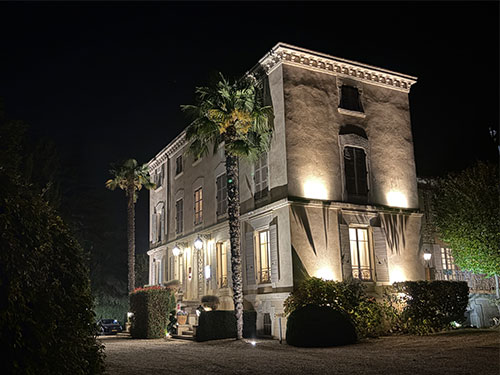
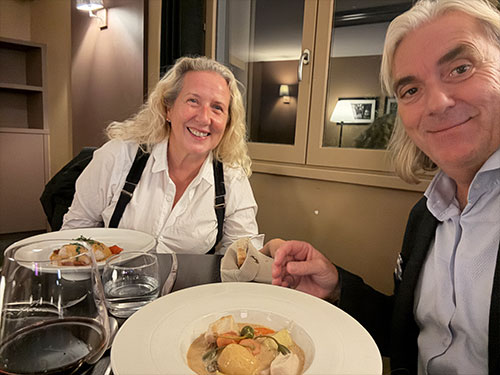
French château near Lyon, definitly without tzatziki
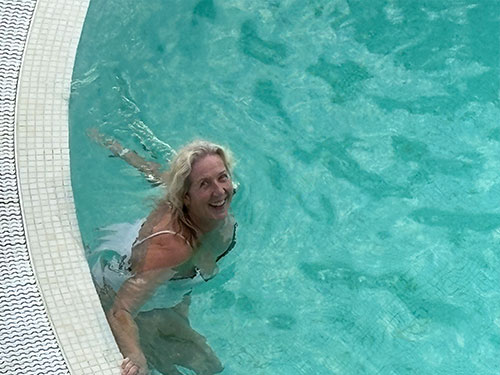
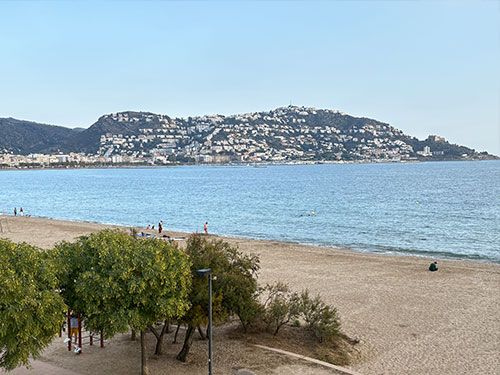
Nothing works without water: Roses (E)
It is incredibly easy and convenient to drive through France in an electric car. Huge compliments for the fantastic charging infrastructure and also for an excellent non-Chinese-made electric car (This blog is ad-free). 🙂 It feels really good to continue traveling emission free, even on land.
Now we are in Spain and are busy building our house. Soon we will see how our journey continues. /Holger Binz

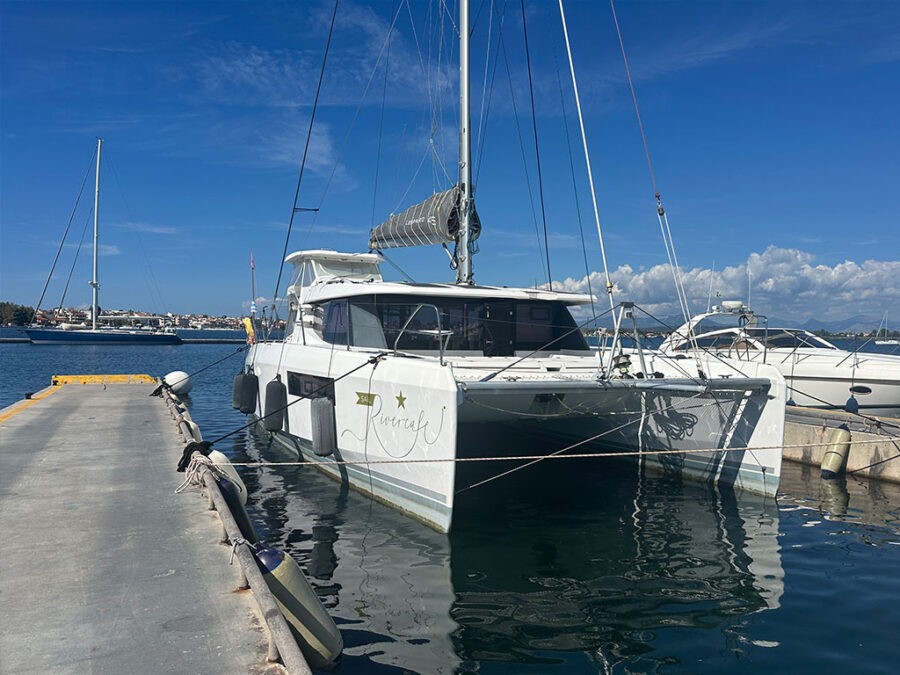
Hallo Karin hallo Holger
Verfolge eure Berichte seit Jahren.
Hoffe ihr könnt euch noch an mich erinnern haben uns in Heidelberg und Cabo Verde getroffen.
Da wir jetzt wieder mit dem Auto nach Spanien fahren interessiert mich wo er übernachtet hat bei Lyon wenn ihr mir die Adresse schicken könnt wäre toll.
Ihr sprach von einem Hausbau und ich sah das Bild von Rosas.
Unser zweiter Spanien Festpunkt ist unser Haus in Cadaqués.
Falls ihr mal in Rosas seid meldet euch wir sind um die Weihnachtszeit in Cadaqués.
Liebe Grüße an euch Beide
Karli Gärtner
Lieber Holger,
beim Lesen Eurer farbenfrohen Berichte drängt sich der Eindruck auf, dass das Segeln – neben den schönen Erlebnissen – vor allem aus einer Menge Stress besteht 😉
Ich wünsche Euch einen schönen Winter, Fortschritt beim Hausbau und im kommenden Jahr eine entspannte Saison!
Herzlich, Tom